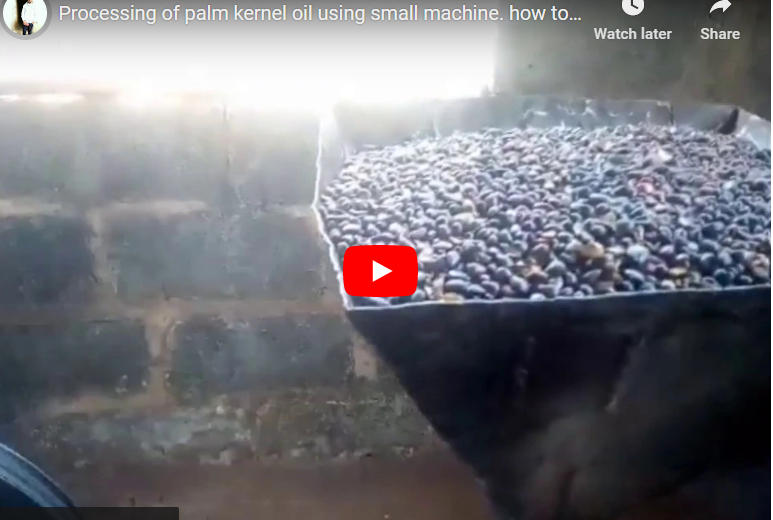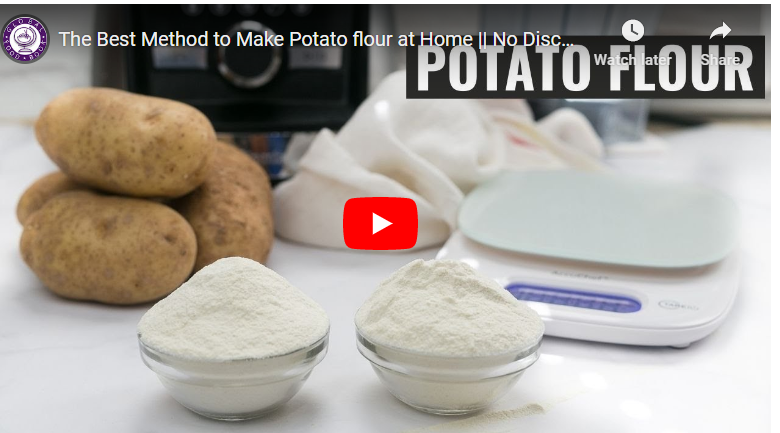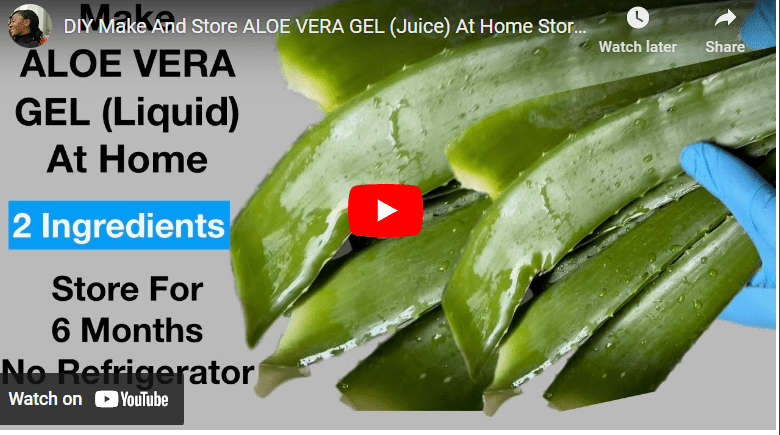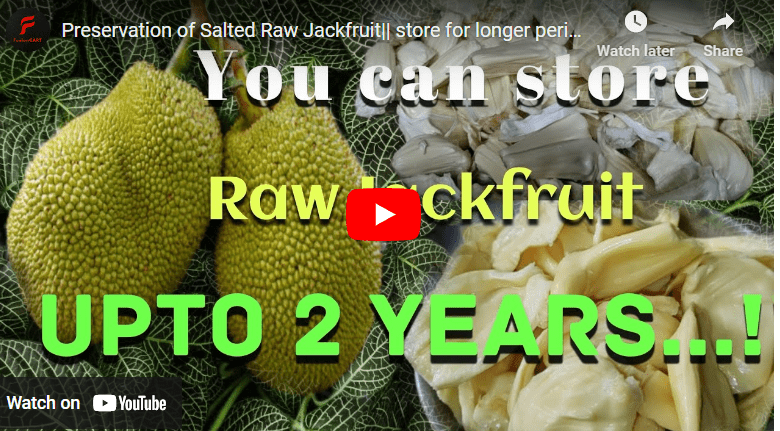Palm kernel oil is an important and widely used vegetable oil that is derived from the kernel of the oil palm fruit. It is a high-quality oil that is rich in lauric acid, making it ideal for use in a variety of applications, such as cooking, soap making, and personal care products.
Due to its versatility and increasing demand, palm kernel oil processing has become a significant industry in many countries, particularly in West Africa and Southeast Asia.
The processing of palm kernel oil involves several stages, including pre-processing, oil extraction, refining, and packaging. Each stage requires specific equipment, skills, and knowledge to ensure the production of high-quality oil that meets market standards.
In this article, we will provide a comprehensive guide on how to process palm kernel oil, covering each stage of the process in detail. We will also discuss the importance of quality control measures in the production of palm kernel oil and the future of the industry.
How To Process Palm Kernel Oil Step By Step Guide
Stage 1. Pre-processing
Once you have selected your raw materials, it’s time to begin the pre-processing stage. This stage involves several key steps to ensure that the palm kernels are properly prepared for oil extraction.
Read Also: How To Process Cashew Nuts At Home
Selection of Raw Materials
You will need to select high-quality raw materials, which are essential for producing high-quality palm kernel oil. Make sure that the palm kernels you choose are clean, free of any impurities, and have a good texture.
Cleaning and Sorting
Once you have your raw materials, the first step is to clean and sort the palm kernels. You can achieve this by using a vibrating screen or a winnowing machine to remove any impurities such as stones, sand, or other foreign materials. This is important because any impurities can negatively affect the quality and purity of the oil.
Read Also: How To Process Cassava to Garri
Crushing and Grinding
After cleaning, the palm kernels need to be crushed and ground into small pieces to create a fine paste. You can use a mechanical crusher or a traditional mortar and pestle to do this. The goal is to create a paste that is uniform and suitable for oil extraction.
Roasting or Cooking
The next step is roasting the palm kernel paste. This process helps to enhance the oil extraction process by breaking down the oil-bearing cells, increasing the oil yield, and improving the flavor of the oil. You can roast the paste using a roasting machine or by using a traditional frying pan.
Read Also: How To Process Coconut Oil
Alternatively, the crushed palm kernels are then heated to a temperature of around 100°C for a few minutes to soften them and prepare them for oil extraction.
Stage 2. Oil Extraction
After completing the pre-processing stage, it’s time to move on to the oil extraction stage. There are two main methods for extracting oil from palm kernel paste: mechanical extraction and solvent extraction.
Mechanical Extraction Method
Mechanical extraction is the traditional method and involves pressing the paste to extract the oil. You can use a manual or motorized press to do this.
The paste is placed in a press and pressure is applied to squeeze out the oil. The resulting oil is then collected and filtered to remove any impurities.
Read Also: How To Process Maize Into Flour
Step 1. Pressing
The cooked palm kernels are then fed into a screw press machine, which uses a rotating screw to apply pressure and extract the oil. The oil is squeezed out of the kernels and collected in a container.
Step 2. Clarification
The extracted oil is then passed through a clarifier to remove any solids or impurities. This process can be repeated several times to improve the quality of the oil.
Step 3. Filtering
The clarified oil is then filtered to remove any remaining impurities or solids. This process can be done using a filter press or other filtering equipment.
Read Also: How to Process Millet into Flour
Solvent Extraction Method
The solvent extraction method involves using a chemical solvent, such as hexane, to dissolve the oil from the palm kernel paste.
The paste is placed in a vessel with the solvent and agitated to dissolve the oil. The resulting oil-solvent mixture is then separated, and the solvent is evaporated to leave behind the oil. The steps include:
Step 1. Extraction
The crushed palm kernels are then mixed with hexane in a solvent extractor. The hexane dissolves the oil from the kernels, leaving behind a mixture of hexane and oil.
Step 2. Separation
The mixture of hexane and oil is then separated using a distillation process. The hexane is evaporated, leaving behind pure palm kernel oil.
Read Also: How To Process Okpa Flour
Step 3. Deodorization
The extracted oil is then deodorized to remove any odors or flavors that may have been introduced during the extraction process. This is done by heating the oil to a high temperature and passing it through a vacuum system.
Step 4. Filtering and Storage
The deodorized oil is then filtered to remove any remaining impurities or solids. The final step in the solvent extraction process is to store the oil in a suitable container under the appropriate conditions.
Stage 3. Refining
After extracting the oil, it needs to be refined to remove any impurities and improve the quality of the oil. The process of refining undergoes a number of stages, which encompass degumming, neutralization, bleaching, and deodorization.
Step 1: Degumming
Degumming is the process of removing any gum or phospholipids from the oil. This can be achieved using an acid treatment or enzymatic treatment.
Step 2: Neutralization
Neutralization involves removing any free fatty acids from the oil. This is done by treating the oil with an alkali, such as sodium hydroxide, which reacts with the free fatty acids to form soap, which can then be removed from the oil.
Step 3: Bleaching
Bleaching is the process of removing any color or impurities from the oil. This can be achieved using activated clay, which absorbs the impurities and removes them from the oil.
Step 4: Deodorization
Deodorization is the final step in the refining process and involves removing any odor or flavor from the oil. This is done by heating the oil under vacuum to remove any volatile compounds that contribute to the odor and flavor.
Stage 4. Packaging and Storage
After producing high-quality palm kernel oil, it’s important to package and store it properly to ensure it maintains its quality and freshness. Here are some tips for packaging and storing palm kernel oil:
1. Use High-Quality Packaging Materials
Choose packaging materials that are suitable for storing oil, such as dark-colored glass bottles or food-grade plastic containers. The packaging material should be able to protect the oil from light, oxygen, and moisture.
2. Label The Packaging
Proper labeling is important to ensure that the product is clearly identified, and its quality can be traced. The label should include information such as the product name, the production date, the expiry date, and any relevant storage instructions.
3. Store In A Cool, Dry Place
Palm kernel oil should be stored in a cool, dry place away from direct sunlight or heat. Exposure to heat and light can cause the oil to deteriorate and reduce its quality.
4. Avoid Exposure To Air
Air can cause the oil to oxidize, which can lead to rancidity and spoilage. Make sure the packaging is tightly sealed and avoid opening the container unnecessarily.
5. Monitor Storage Conditions
Regularly check the storage conditions, such as temperature and humidity, to ensure that the oil is stored under optimal conditions.
Where to Source for Palm Kernel
Palm kernel is a major agricultural product that is widely available in many tropical regions around the world. It can be sourced from various places, including local farmers, palm oil mills, and palm kernel processing plants.
In regions where palm oil production is a major industry, such as West Africa and Southeast Asia, it is relatively easy to find palm kernel suppliers.
Large-scale palm oil mills often have palm kernel processing facilities that produce palm kernel oil as a byproduct, and these facilities may sell palm kernels to external buyers.
Local farmers who cultivate oil palm trees may also sell their palm kernels to processors or middlemen who distribute them to buyers.
Online platforms and trade associations can provide useful information on sourcing palm kernel.
Equipment Needed for Palm Kernel Processing
Palm kernel processing requires various types of equipment to carry out the different stages of the process. Here are some of the key pieces of equipment used in palm kernel processing:
Hammer Mill
A hammer mill is used to crush the palm kernels into smaller pieces, making it easier to extract the oil.
Cooker
A cooker is used to heat the crushed palm kernels to a temperature of around 100°C for a few minutes to soften them and prepare them for oil extraction.
Screw Press
A screw press is used to extract the oil from the heated and crushed palm kernels. The oil is squeezed out of the kernels and collected in a container.
Clarifier
A clarifier is used to remove any solids or impurities from the extracted oil.
Filter Press
A filter press is used to filter the clarified oil to remove any remaining impurities or solids.
Deodorizer
A deodorizer is used to remove any odors or flavors that may have been introduced during the extraction process.
Storage Tanks
Storage tanks are used to store the extracted and processed palm kernel oil under the appropriate conditions.
Weighing scales
Weighing scales are used to accurately measure the quantities of palm kernels and palm kernel oil used and produced during the process.
Note that the specific equipment required for palm kernel processing may vary depending on the processing method used, the scale of production, and other factors.
It’s important to choose high-quality equipment that is appropriate for the specific needs of the processing operation to ensure efficient and effective processing of palm kernel.
Where to Sell Palm Kernel Produce
There are several options for selling palm kernel produce, including:
Palm Oil Mills
Many palm oil mills also have palm kernel processing facilities and may purchase palm kernels from external sources. Selling to a palm oil mill can be a convenient option as the transportation cost may be lower since the mill is usually located in the same region as the palm kernel source.
Traders and Middlemen
Traders and middlemen who specialize in buying and selling palm kernel produce can be a good option for small-scale producers who do not have the resources or market connections to sell their produce directly to processors or end-users.
Exporters
Exporters who specialize in palm kernel produce can help connect producers with buyers in international markets. However, exporting may require compliance with various regulations and standards, which can add to the cost and complexity of the process.
Local Markets
In some regions, there may be local markets where palm kernel produce can be sold directly to consumers or retailers. This option can be a good way to access a local market and avoid transportation costs.
Online Platforms
Online platforms can be a useful tool for connecting with potential buyers and expanding market reach. There are various online platforms specifically dedicated to the trading of agricultural produce.
Industries that Demand for Palm Kernel Produce
Palm kernel produce, particularly palm kernel oil, is a versatile ingredient used in various industries. Here are some of the industries that have a high demand for palm kernel produce:
Food Industry
Palm kernel oil is commonly used in the food industry for cooking, frying, and baking. It is also used as an ingredient in food products such as margarine, confectionery, and snack foods.
Cosmetics and Personal Care Industry
Palm kernel oil is used in various cosmetic and personal care products, such as soaps, lotions, and shampoos, due to its moisturizing and emollient properties.
Pharmaceutical Industry
Palm kernel oil is used as an ingredient in some pharmaceutical products, such as ointments and creams, due to its skin-healing properties.
Biofuel Industry
Palm kernel oil can be used as a feedstock for the production of biofuels, such as biodiesel. The use of palm kernel oil as a biofuel feedstock is becoming increasingly popular due to its renewable and sustainable nature.
Animal Feed Industry
Palm kernel cake, which is a byproduct of palm kernel oil extraction, is a common ingredient in animal feed due to its high protein and energy content.
Chemical Industry
Palm kernel oil can be used as a raw material in the production of various chemicals, such as fatty acids, glycerol, and detergents.
Challenges of Processing Palm Kernel
Processing palm kernel can be a challenging task due to various factors. Here are some of the common challenges faced in palm kernel processing:
Quality Of Palm Kernel
The quality of palm kernel can vary depending on factors such as the age of the tree, harvesting methods, and storage conditions. Poor quality palm kernel can result in lower yields and reduced quality of the end product.
Availability Of Raw Materials
Availability of palm kernel can vary seasonally, making it challenging to maintain consistent production throughout the year. This can also result in price fluctuations and supply chain disruptions.
Cost Of Equipment
The cost of purchasing and maintaining equipment for palm kernel processing can be a significant investment for small-scale producers. This can limit the ability of small-scale producers to compete in the market.
Environmental Concerns
The palm oil industry has come under scrutiny due to concerns over environmental sustainability, such as deforestation and biodiversity loss. This has led to increased pressure on producers to adopt sustainable practices, which can add to the cost and complexity of processing.
Labor-Intensive Process
Palm kernel processing is a labor-intensive process, requiring manual labor for tasks such as cracking, sorting, and pressing. This can be a challenge in regions where there is a shortage of skilled labor or where labor costs are high.
Health And Safety Concerns
The use of chemicals in processing, such as solvents, can pose health and safety risks to workers if proper precautions are not taken. Additionally, exposure to dust and fumes during processing can cause respiratory problems.
Market Competition
The palm oil industry is highly competitive, and producers face stiff competition from other palm kernel producers. This can result in price fluctuations and market saturation, making it challenging for producers to maintain profitability.
Sourcing of Raw Materials
Sourcing quality palm kernels can be a challenge, especially for small-scale producers who may not have the resources to conduct proper quality control measures.
Equipment Maintenance
The equipment used for processing palm kernel, such as the expeller and separator, requires regular maintenance and repair to ensure that they function properly. Lack of maintenance can result in breakdowns and downtime, which can affect the overall efficiency of the processing plant.
Is Palm Kernel Processing Profitable
Palm kernel processing can be a profitable business, provided that producers maintain high-quality standards, improve production efficiency, and keep up with changing market trends and demands.
However, the industry is highly competitive, and market demand can fluctuate, affecting profitability. To remain competitive, producers must invest in modern and efficient processing technologies and identify new market opportunities.
Despite the challenges, there is generally high demand for palm kernel products due to their versatility and numerous applications across various industries.
How To Make Cold Pressed Palm Kernel Oil at Home
Cold pressed palm kernel oil can be made at home using simple tools and methods. Here are the steps to follow:
Step 1. Obtain High-Quality Palm Kernels
Look for fresh, high-quality palm kernels from a trusted source. You can purchase them from local markets or online stores.
Step 2. Clean The Palm Kernels
Wash the palm kernels thoroughly to remove dirt and debris.
Step 3. Crack The Palm Kernels
Use a nutcracker or a hammer to crack the palm kernels and remove the shells.
Step 4. Roast The Palm Kernels
Place the kernels in a pan and roast them over medium heat for about 10-15 minutes. This helps to release the oil and enhance the flavor.
Step 5. Grind The Roasted Kernels
Use a blender or a food processor to grind the roasted kernels into a fine paste.
Step 6. Extract The Oil
Place the paste in a cheesecloth or muslin bag and squeeze out the oil. Alternatively, you can use a manual or hydraulic press to extract the oil.
Step 7. Filter The Oil
Pour the oil through a fine mesh or a coffee filter to remove any remaining impurities.
Step 8. Store The Oil
Transfer the oil to a clean, dry container and store it in a cool, dark place.
How To Extract Palm Kernel Oil Manually
Extracting palm kernel oil manually involves a simple process that can be done with basic tools and equipment. Here are the steps to follow:
Step 1. Obtain High-Quality Palm Kernels
Look for fresh, high-quality palm kernels from a trusted source. You can purchase them from local markets or online stores.
Step 2. Crack The Palm Kernels
Use a nutcracker or a hammer to crack the palm kernels and remove the shells.Grind the kernels: Use a mortar and pestle or a grinding stone to grind the kernels into a paste.
Step 3. Mix With Water
Add some water to the paste and mix thoroughly.
Step 4. Heat The Mixture
Place the mixture in a pot and heat it over low heat. Stir continuously to prevent burning and ensure even heating.
Step 5. Separate The Oil
Once the mixture has heated up, the oil will separate from the water and float to the surface. Use a spoon or ladle to scoop out the oil and transfer it to a clean container.
Step 6. Filter The Oil
Pour the oil through a fine mesh or a coffee filter to remove any remaining impurities.
Step 7. Store The Oil
Transfer the oil to a clean, dry container and store it in a cool, dark place.
Note that Extracting palm kernel oil manually can be a time-consuming process, but it is an effective way to produce high-quality oil at home without the need for expensive equipment.
Palm Kernel Oil Processing PDF
Palm kernel oil processing PDFs are comprehensive documents that provide detailed information on the different stages of palm kernel oil processing, including pre-processing, oil extraction, packaging, storage, and quality control measures.
These documents are useful for individuals and small-scale processors who want to produce palm kernel oil at home or on a small scale.
They typically include information on the equipment and tools required for each stage of the process, as well as step-by-step instructions on how to extract high-quality oil.
How To Extract Palm Oil At Home
Extracting palm oil at home is a relatively simple process that can be done using basic tools and equipment.
The process typically involves obtaining high-quality palm fruits, processing them using manual or mechanical methods, and storing the oil in a cool, dry place.
There are numerous resources available in PDF format that provide detailed instructions on how to extract palm oil at home, including information on the tools and equipment required for each stage of the process.
Palm Oil Processing PPT
Palm oil processing PPTs are visual presentations that provide an overview of the different stages of palm oil processing.
These presentations typically include images, diagrams, and charts that help to illustrate the various stages of the process and the equipment and tools required for each stage.
They are a useful resource for individuals and small-scale processors who want to learn more about palm oil processing, but prefer a more visual learning experience. Palm oil processing PPTs are often used in workshops and training sessions to provide an introduction to the process and to help participants understand the key concepts and techniques involved in producing high-quality palm oil.
Conclusion
In conclusion, palm kernel oil processing involves several stages that require careful attention to detail to ensure high-quality oil. With the right equipment, knowledge, and expertise, anyone can produce palm kernel oil at home or on a small scale for personal or commercial use.




